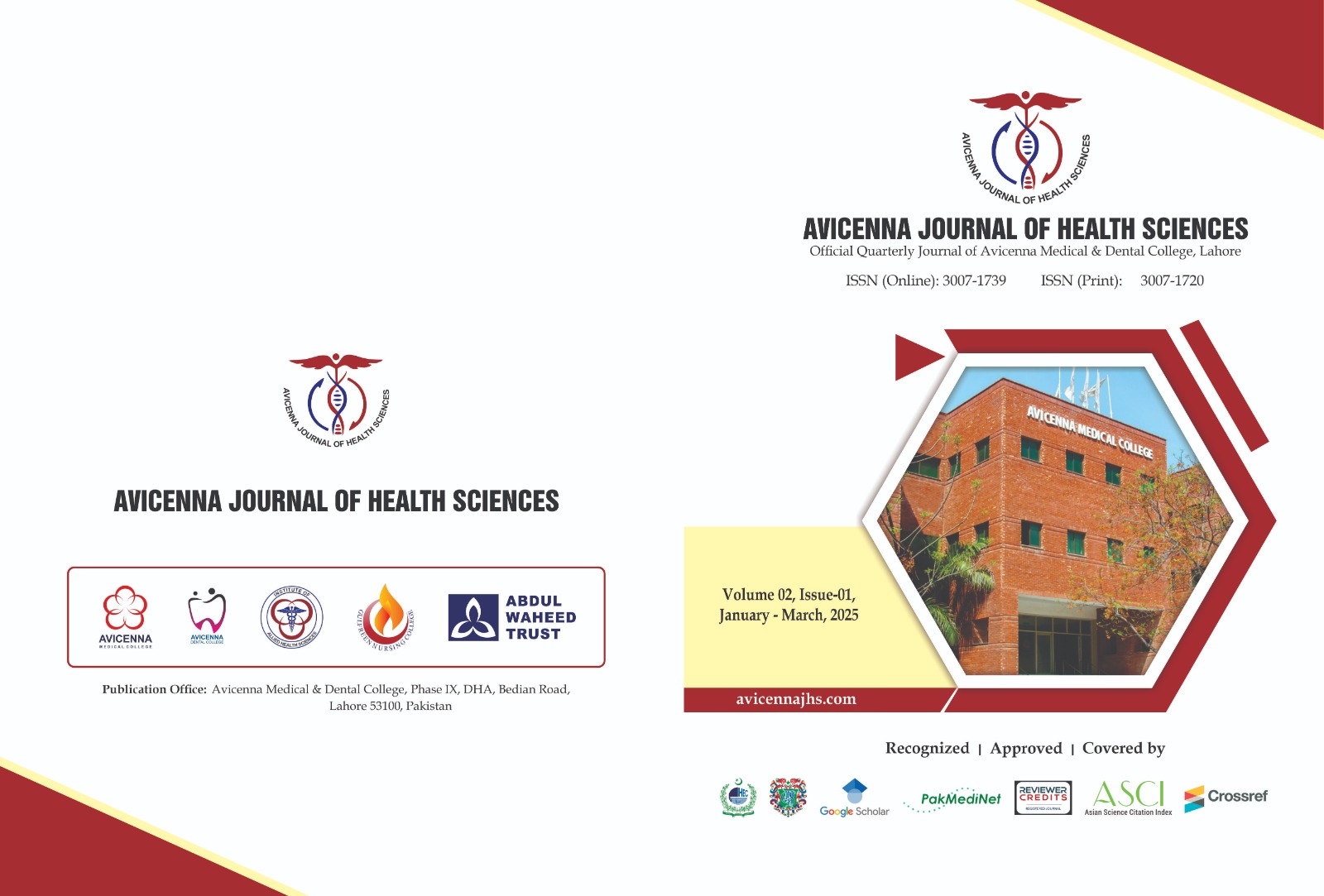Adrenalectomy Unveiled: A Comprehensive Exploration of Surgical Endeavors in Pakistan
Keywords:
Adrenalectomy, Robotic adrenalectomy, Minimally invasive surgery, Adrenal neoplasms, Surgical outcomesAbstract
Background: Adrenalectomy is the standard treatment for adrenal pathologies, with minimally invasive techniques enhancing outcomes. However, data from developing countries remain scarce.
Objective: To assess adrenalectomy outcomes at a tertiary care center in Pakistan.
Methods: A retrospective case series (2017–2024) at Pakistan Kidney and Liver Institute (IRB: PKLI-IRB/AP/172) included 17 patients with confirmed adrenal masses. Data included demographics, presentation, surgical approach (open, laparoscopic, robotic), and outcomes. Open surgery via subcostal incision was used for large (>6 cm) or invasive tumors; smaller tumors underwent laparoscopic or robotic resection using the Versius system.
Results: The cohort (mean age 46.1±17.1 years) showed male predominance (58.8%). Comorbidities included hypertension (47.1%) and diabetes (35.3%). Most tumors were unilateral (82.4%), with mean size 8.78±3.82mm. Surgical approaches included open (47.1%), robotic (41.2%), and laparoscopic (11.8%), with one conversion case (5.9%). Pathologies revealed adrenal carcinoma (35.3%), pheochromocytoma (23.5%), and rare cases including liposarcoma (5.9%). Intraoperative complications occurred in one case (5.9%). Postoperative complications included infection (11.8%), DVT (11.8%), and lymphorrhea (5.9%). Median operative time was 160 minutes (IQR:55), blood loss 150mL (IQR:200), and hospital stay 5 days (IQR:2). Normal adrenal function was preserved in 82.4% postoperatively. No recurrences occurred, with 100% survival at follow-up.
Conclusion: Adrenalectomy at our center demonstrated favorable outcomes across open and minimally invasive approaches, with low complication rates and excellent survival. Robotic techniques comprised a significant proportion of cases, reflecting evolving surgical practice. These results provide valuable insights into adrenal surgery outcomes in a Pakistani population
Downloads
Published
How to Cite
Issue
Section
License
Copyright (c) 2025 Avicenna Journal of Health Sciences

This work is licensed under a Creative Commons Attribution 4.0 International License.







